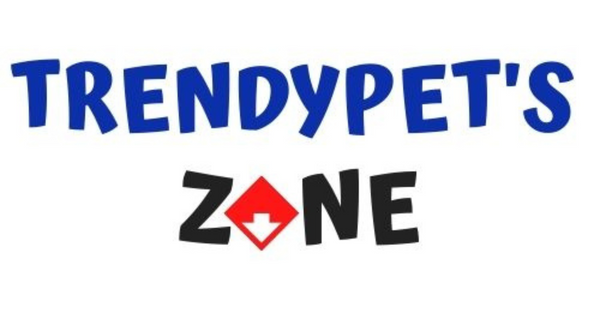
THE NEW PUPPY SURVIVAL GUIDE: First 30 Days Checklist
Bringing home a new puppy is pure joy — but it’s also a whirlwind of sleepless nights, chewed shoes, and questions like “Am I doing this right?”
The truth: the first 30 days are the most crucial. This is when your puppy learns where to eat, where to potty, how to behave, and — most importantly — that you’re their safe place. The habits (good or bad) you start now can last a lifetime.
This expanded guide breaks down supplies, daily routines, training tips, and week-by-week milestones, with plenty of expert pro tips to keep you ahead of the curve.
👜 Before Bringing Puppy Home: Essential Supplies
Don't wait until midnight when your puppy has their first accident to realize you forgot enzyme cleaner. Preparation makes everything smoother.

Must-Haves:
→ Crate (with dividers so it grows with your puppy)
→ Comfy bed & machine-washable blankets
→ Stainless steel or ceramic food & water bowls
→ Puppy food (stick with what breeder/rescue used for 1–2 weeks)
→ Collar, harness, and ID tag (with your phone number)
→ 4–6 ft leash (skip retractable for now — they teach bad habits)
→ Puppy pee pads or a real grass and potty patch
→ Poop bags & scoop
→ Variety of safe chew toys (rubber, rope, frozen teething toys)
→ Puppy brush & nail clippers
→ Enzyme cleaner (accidents WILL happen — regular cleaners won’t cut it)
👉 Pro Tips:
→ Set up a “puppy zone” (playpen or gated area) where accidents are easy to clean.
→ Remove hazards: exposed wires, shoes, houseplants, small objects.
→ If you have kids, prep them too: teach calm voices and no grabbing.
📅 Days 1–3: Settling In
Your puppy just left their mom and littermates. This is a HUGE transition. Keep the world small and calm.

Focus on:
Crate Training: Feed meals in the crate, toss treats in, never force.
Potty Schedule: Outside every 2 hours, plus after waking, eating, and playing.
Bonding: Gentle play, cuddles, and naps. Puppies need 18–20 hours of sleep daily.
Routine: Show them food/water area, sleeping space, and potty spot.
Checklist:
☑️ Food & water spot introduced
☑️ First potty breaks outside
☑️ Safe sleeping setup ready
☑️ Vet appointment scheduled
👉 Pro Tips:
→ Expect crying at night. Place the crate in your room so they feel secure.
→ Reward every potty success outside. Treats + praise = faster training.
📅 Week 1–2: Building Routine
Now that the shock of the new home is wearing off, structure becomes key. Puppies thrive on predictability.

Focus on:
Feeding: 3–4 meals at the same times daily.
Potty Training: Keep accidents neutral, clean thoroughly, reward outdoors.
Training Basics: Name recognition, “sit,” and recall (“come”).
Socialization at Home: Introduce everyday sounds (vacuum, TV, hair dryer).
Vet Visit: First vaccinations, deworming, microchip check.
Checklist:
☑️ Bathroom spot established
☑️ Daily crate practice (short calm times)
☑️ Short leash walks (backyard or quiet street)
☑️ Brushing, paw & ear handling started
👉 Pro Tips:
→ Puppies have the attention span of a goldfish. Keep training under 5 minutes.
→ Use positive reinforcement only (treats, play, praise). Never punish.
📅 Week 2–3: Social Skills
This is the “golden window” for socialization (3–16 weeks). Expose your pup to safe new experiences while keeping it positive.

Focus on:
Meeting People: Aim for different ages, appearances, voices.
Pet Introductions: Calm, leashed meetings with safe vaccinated dogs.
Nipping: Redirect to toys — never use hands as playthings.
Handling Practice: Touch ears, paws, tail daily to prep for vet visits.
Checklist:
☑️ Met at least 3 new people
☑️ Experienced new safe surfaces (grass, gravel, wood floors)
☑️ Practiced leash walking 5–10 mins daily
☑️ Exposed to household sounds (doorbell, vacuum, blender)
👉 Pro Tips:
→ Pair scary sounds with treats (e.g., treat + vacuum noise = “vacuum = good”).
→ Avoid dog parks until fully vaccinated. Stick to trusted puppy-safe playmates.
📅 Week 3–4: Confidence & Exploration
Your puppy is now curious, teething, and full of mischief. Time to channel that energy productively.

Focus on:
Walks: Structured 10–15 min walks. Don’t let pulling become a habit.
Teething: Offer frozen carrots, wet washcloths, or durable chew toys.
Training: Add “down,” “stay,” leash manners. Keep sessions playful.
Grooming: Brushing, nail checks, maybe a gentle bath.
Social Play: If vet gives the okay, try short puppy playdates.
Checklist:
☑️ Daily 5–10 min training sessions
☑️ Car rides to new safe places
☑️ Calm crate time practiced (prevents separation anxiety)
☑️ Growth tracked + vet vaccine schedule followed
👉 Pro Tips:
→ Puppies shouldn’t walk for miles yet. Rule of thumb: 5 minutes per month of age, twice daily.
→ Practice leaving your puppy alone for short stretches so they learn independence.
✅ 30-Day Puppy Survival Milestones

By the end of the first month, most puppies will have:
→ Crate training basics in place
→ Eating reliably on schedule
→ Potty training progress (fewer accidents, predictable routine)
→ Learned name + “sit”
→ First round of shots completed
→ Met 10+ new people & environments
→ Daily grooming tolerance started
→ Discovered safe chew toys (furniture saved 🙌)
🎯 Final Thoughts
The first month is intense — expect accidents, sleepless nights, and moments of doubt. But remember: progress over perfection. Every tiny win (a successful potty trip, a calm crate nap, a first “sit”) is building the foundation for a confident, well-mannered dog.❤🐾
Stay patient, keep sessions short and fun, and celebrate small victories. The love and trust you build now will last for years.

👉 Print or save this checklist, and check things off as you go. In just 30 days, you’ll see how far you and your puppy have come — and the best part? The adventure is only beginning.
Tags: new puppy tips, first month with puppy, puppy training checklist, bringing home a new puppy, puppy survival guide
